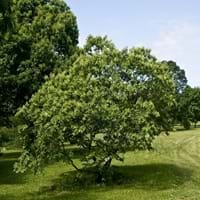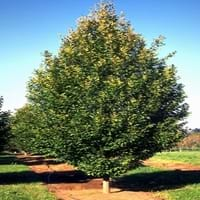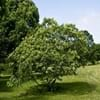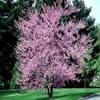Life Span
Perennial
Perennial
Origin
Mid-Atlantic United States, Southeastern United States, South-Central United States
Europe, Eastern Europe, Southern Europe, Western Europe, Turkey
Types
Not Available
Not Available
Habitat
Hillside, Ridges
Hedge, Woodland Garden Canopy
USDA Hardiness Zone
5-9
4-8
Sunset Zone
Not Available
2a, 2b, 3a, 3b, 4, 5, 6, 7, 8, 9, 14, 15, 16, 17
Habit
Upright/Erect
Oval or Rounded
Flower Color
White, Light Yellow, Ivory
Yellow, Green
Flower Color Modifier
Bicolor
Bicolor
Fruit Color
Light Green, Chartreuse
Yellow, Green, Brown
Leaf Color in Spring
Green, Gray Green
Green, Light Green
Leaf Color in Summer
Gray Green, Dark Green
Green, Dark Green
Leaf Color in Fall
Yellow, Gold, Tan
Yellow, Yellow green, Orange Red
Leaf Color in Winter
Not Available
Not Available
Leaf Shape
Elliptic
Ovate and toothed
Plant Season
Spring, Summer, Fall
Summer, Fall, Winter
Sunlight
Full Sun, Partial Sun
Full Sun, Partial Sun, Partial shade
Type of Soil
Clay, Loam
Clay, Loam
The pH of Soil
Acidic, Neutral
Acidic, Neutral
Soil Drainage
Well drained
Average
Bloom Time
Late Spring, Early Summer
Spring
Tolerances
Not Available
Pollution, Drought
Where to Plant?
Ground
Ground
How to Plant?
Seedlings
Seedlings
Plant Maintenance
Medium
Medium
Watering Requirements
Average Water Needs, Requires watering in the growing season, Water once every two or three weeks
Requires regular watering
In Summer
Lots of watering
Lots of watering
In Spring
Moderate
Moderate
In Winter
Average Water
Average Water
Soil pH
Acidic, Neutral
Acidic, Neutral
Soil Type
Clay, Loam
Clay, Loam
Soil Drainage Capacity
Well drained
Average
Sun Exposure
Full Sun, Partial Sun
Full Sun, Partial Sun, Partial shade
Pruning
Prune in early spring, Remove damaged leaves, Remove dead branches, Remove dead leaves
Remove dead or diseased plant parts
Fertilizers
All-Purpose Liquid Fertilizer
All-Purpose Liquid Fertilizer
Pests and Diseases
Red blotch
Aphids, Coral Spot, Powdery mildew
Plant Tolerance
Drought
Drought
Flowers
Showy
Insignificant
Flower Petal Number
Not Available
Not Available
Foliage Texture
Coarse
Medium
Foliage Sheen
Glossy
Glossy
Attracts
Birds, Deers, Rabbits, Squirrels
Caterpillar, Not Available
Allergy
Not Available
Pollen
Aesthetic Uses
Beautification, Landscape Designing, Showy Purposes
Bonsai
Beauty Benefits
Not Available
Not Available
Environmental Uses
Air purification, Food for insects
Air purification
Medicinal Uses
Headache, Treating fever
Bach, Haemostatic, Ophthalmic
Part of Plant Used
Leaves, Seeds, Stem
Bark, Leaves, Wood
Other Uses
Decoration Purposes, Showy Purposes, Used in biomass, Wood is used for making furniture, Wood log is used in making fences
Used as fuel, Used to make yellow dye
Used As Indoor Plant
No
Yes
Used As Outdoor Plant
Yes
Yes
Garden Design
Edible, Feature Plant, Fruit / Fruit Tree, Mixed Border, Screening / Wind Break, Shade Trees
Feature Plant, Hedges, Screening / Wind Break, Shade Trees, Street Trees
Botanical Name
CASTANEA pumila
CARPINUS betulus
Common Name
Chinquapin
European Hornbeam
In Hindi
बौना शाहबलूत
European Hornbeam
In German
Zwergkastanien
Hainbuche
In French
châtaignier nain
Hornbeam européenne
In Spanish
el castaño enano
Europeo carpe
In Greek
νάνος καστανιάς
Ευρωπαϊκή Γαύρος
In Portuguese
νάνος καστανιάς
Carpino Europeia
In Polish
krasnolud kasztan
Europejski Grab
In Latin
P. castaneis
Carpinus betulus
Phylum
Anthophyta
Magnoliophyta
Class
Magnoliopsida
Magnoliopsida
Family
Fagaceae
Betulaceae
Clade
Angiosperms, Eudicots, Rosids
Angiosperms, Eudicots, Rosids
Subfamily
Cassidinae
Coryloideae
Number of Species
Not Available
Not Available
Season and Care of Chinquapin and European Hornbeam
Season and care of Chinquapin and European Hornbeam is important to know. While considering everything about Chinquapin and European Hornbeam Care, growing season is an essential factor. Chinquapin season is Spring, Summer and Fall and European Hornbeam season is Spring, Summer and Fall. The type of soil for Chinquapin is Clay, Loam and for European Hornbeam is Clay, Loam while the PH of soil for Chinquapin is Acidic, Neutral and for European Hornbeam is Acidic, Neutral.
Chinquapin and European Hornbeam Physical Information
Chinquapin and European Hornbeam physical information is very important for comparison. Chinquapin height is 610.00 cm and width 150.00 cm whereas European Hornbeam height is 1,220.00 cm and width 910.00 cm. The color specification of Chinquapin and European Hornbeam are as follows:
Chinquapin flower color: White, Light Yellow and Ivory
Chinquapin leaf color: Green and Gray Green
European Hornbeam flower color: Yellow and Green
- European Hornbeam leaf color: Green and Light Green
Care of Chinquapin and European Hornbeam
Care of Chinquapin and European Hornbeam include pruning, fertilizers, watering etc. Chinquapin pruning is done Prune in early spring, Remove damaged leaves, Remove dead branches and Remove dead leaves and European Hornbeam pruning is done Remove dead or diseased plant parts. In summer Chinquapin needs Lots of watering and in winter, it needs Average Water. Whereas, in summer European Hornbeam needs Lots of watering and in winter, it needs Average Water.





